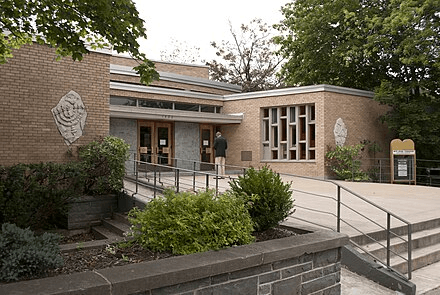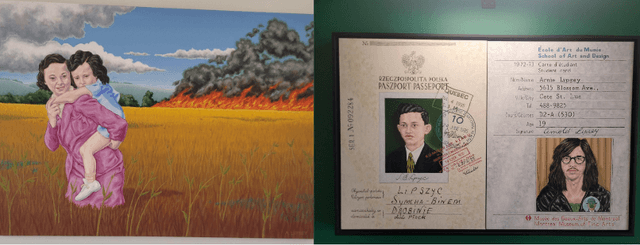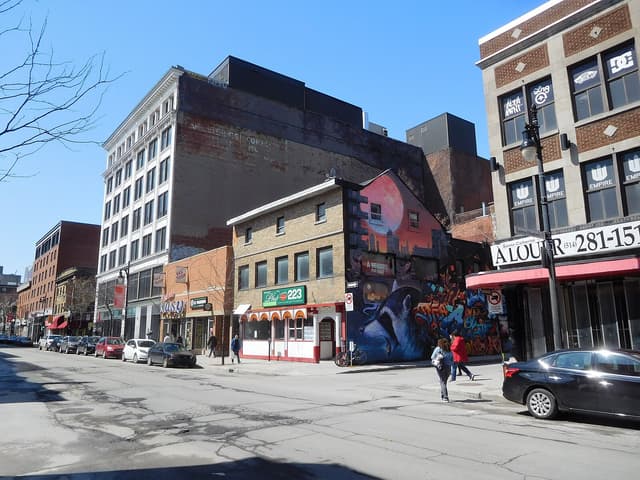Had you, a stray urban romantic, taken it upon yourself to stroll through the Plateau of 1920, you might have thought yourself in an Eastern European shtetl: Yiddish-inscribed storefronts, bundled up bubbes, and Shuls as far as the eye could see—indeed, North America’s Pale of Settlement paradise was once Montreal. Then, on the corner of Clark and Bagg Street, you would encounter a noble slab of a building where, in 100 years, a congregation would still be found praying every Shabbos morning.
Bagg Street Shul, a humble site of prayer, with its conservative brick ornamentation, wrought-iron awning and Yiddish-inscribed cornerstone has been catching the wistful eyes of urban pilgrims for generations. While the building sports traits typical of the Plateau’s architecture, its historical role in Montreal’s Jewish immigrant community lends it a palatable “old world” aura.
In 1921, the congregation bought a duplex a few steps from The Main and converted it into the synagogue that has remained (mostly) unchanged since then. The sanctuary exhibits some first-class relics: Folk-like astrological murals painted on the balustrade of the women’s section, furnishings and light fixtures bought in 1922 (from another synagogue, no less), and a magnificently ornate Aron. A skylight, too, crowns the bimah, lending a floating, light touch to the whole space.
What is true of many places of worship today are the colourful people they retain—each Saturday, Bagg Street is host to some of the most luminous, warm and interesting folk in Montreal. There is the Chasid who hails from Outremont, others from Park Extension, and Plateau locals. One non-Jewish woman, uninterested in conversion, regularly attends to appreciate the community atmosphere. Despite the inclusive nature, the Synagogue is traditional: Services are Orthodox, genders are separate, and Yiddish can still be heard murmured between the congregants under the melodious chants of Ashkenazi prayer.
After the Saturday morning services, the congregation is entreated by Mr. Sam Sheraton (a prominent figure at the shul) to join him for Kiddush. Stooping downstairs for a sip of grape juice and a hefty helping of Ashkenazi delights, you will also be served up the sage wisdom of the Bagg Street milieu.
Over endless portions of gefilte fish, herring, chrayn, and challah, you can kibitz to the tune of just about anything—many are eager to offer life advice or chat about Bill Halley and his Comets. In any case, there is no limit to the convivial experience that a visitor can have.
This kind atmosphere is in large part due to Mr. Michael Kaplan, Bagg Street’s steadfast custodian and euphonious Torah reader. Mr. Kaplan began leyning in 2006. Up until that point, he had only balanced the Shul’s books and wasn’t involved in the liturgical side of things.
“I wasn’t going there. I just signed cheques,” he recalls, “But in 2006 … during the middle of a service, the Torah reader had a disagreement with members of the congregation and stormed out.” Mr. Kaplan was called upon by Mr. Joe Brick, the beloved administrator of Bagg Street, to take on the all-important role. “I knew how hard it was to get a Torah reader—especially if he’s not paid,” Kaplan tells me. With the help of his son, who was studying Torah at the time, Kaplan began to learn on his own time. “At night, I memorized. It’s safe to say I didn’t get any sleep for a few days.”
While his appointment was unexpected, the knowledge that his great-grandfather performed the same role some 90 years prior deepened his commitment. As Bagg Street’s Torah reader, Mr. Kaplan would mark his own place in the multi-generational history between his family and the Shul: “I was sharing the name of the same guy who did this in the 1920s.” He feels he “stepped into a lifestyle which had meaning” for him and now manages the building with a herculean approach towards both physical and cultural upkeep. The Bagg Street Shul is truly “a Synagogue of a million stories,” as Kaplan so earnestly puts it.
Powered by Froala Editor


-To3NzIDQctvdWpcIus7C9cajIIzBLX.jpg&w=128&q=75)


